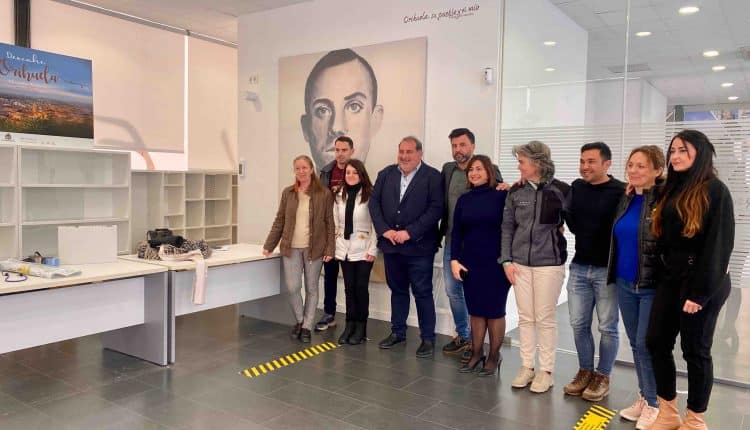This week, the process has begun to move the Tourist Information Office in Orihuela from it´s current location in a temporary building known affectionately as the “fish bowl”, to a permanent home.
“Today a historic and long-awaited event takes place in Orihuela. Today the transfer of the Orihuela Centro tourist office to its final location has begun, that is, to the Town Hall in the Marqués de Arneva Palace”, announced María García, Councillor for Tourism, who, together with José Aix, Deputy Mayor of Orihuela and Councillor for Town Planning and Ángel Noguera, Councillor for Infrastructures, oversaw the historic start of the process to move the function to the Marquis de Arneva Palace.
The new tourist office “is located in an important enclave, near the historic centre. We already deserved definitive, modern, accessible facilities that meet all the expectations of visitors”, García stated. Likewise, she explained that it has two entrances, one through the Plaza del Carmen and the other through the main door of the Town Hall, which has all the accessibility standards.
The facilities will present a renovated interior design “both of the walls, which will tell us things about our municipality and about the building in which we are going to be. It will be an interactive office, in which people will be able to take photos there, charge their mobile phones or make use of an information screen”, pointed out the tourism councillor, although some dependencies will be inaugurated at the end of the month.
The “temporary” booth installed twenty years ago for the Light of Images and which has housed the tourist office for a decade, will be removed from the Plaza de la Soledad at the beginning of April, as announced by José Aix, deputy mayor of Orihuela and Councillor for Urban Planning, “we want to revitalise this part of the city and value our heritage, and the way to do so is to clear the architectural barriers, to show them off and show them in all their splendour”.
In this sense, Aix has announced that “what we propose for this space is to leave the surface open, with the installation of a symbolic element that will allude to the city and its essence and above all, that will value the heritage that surrounds this environment”.





